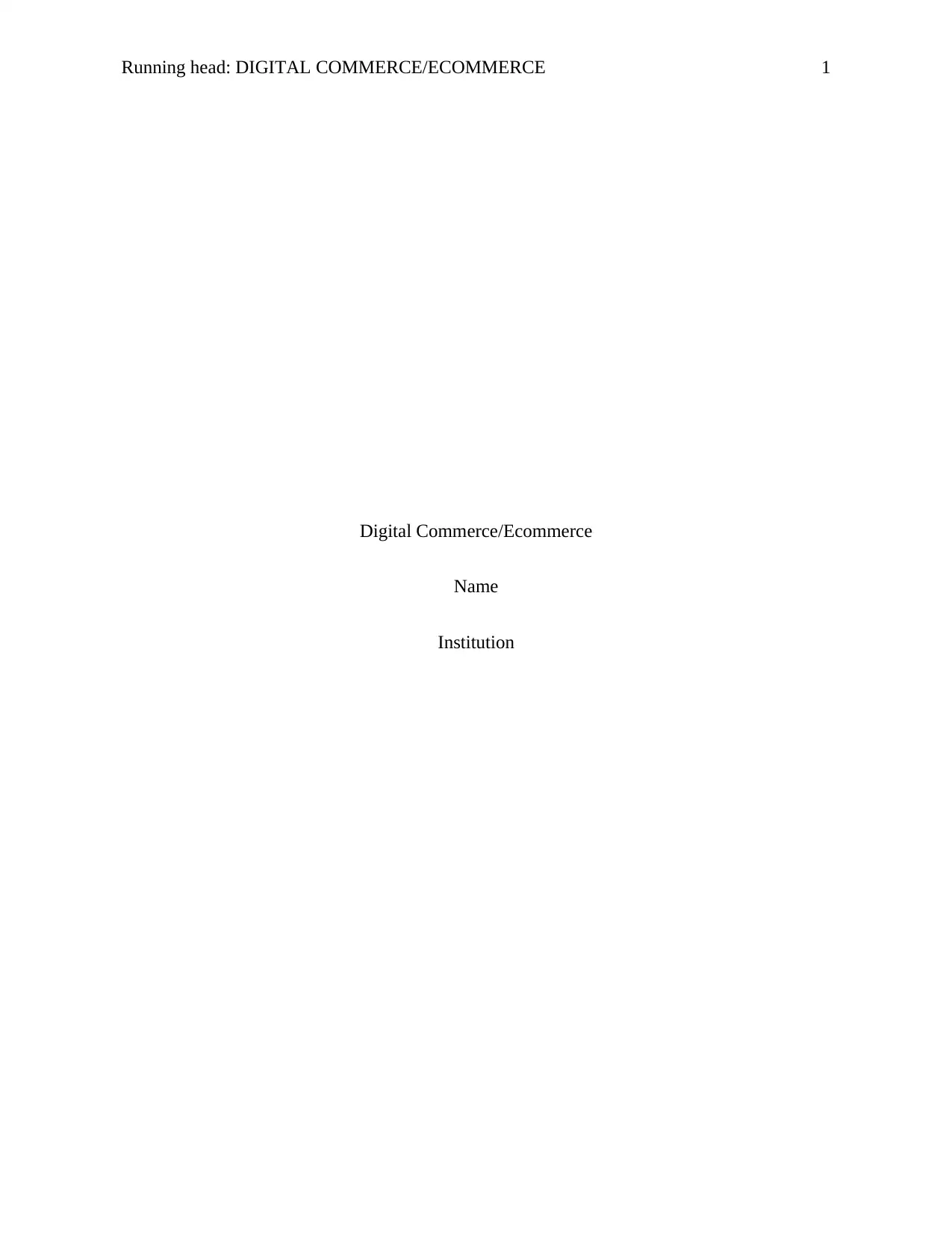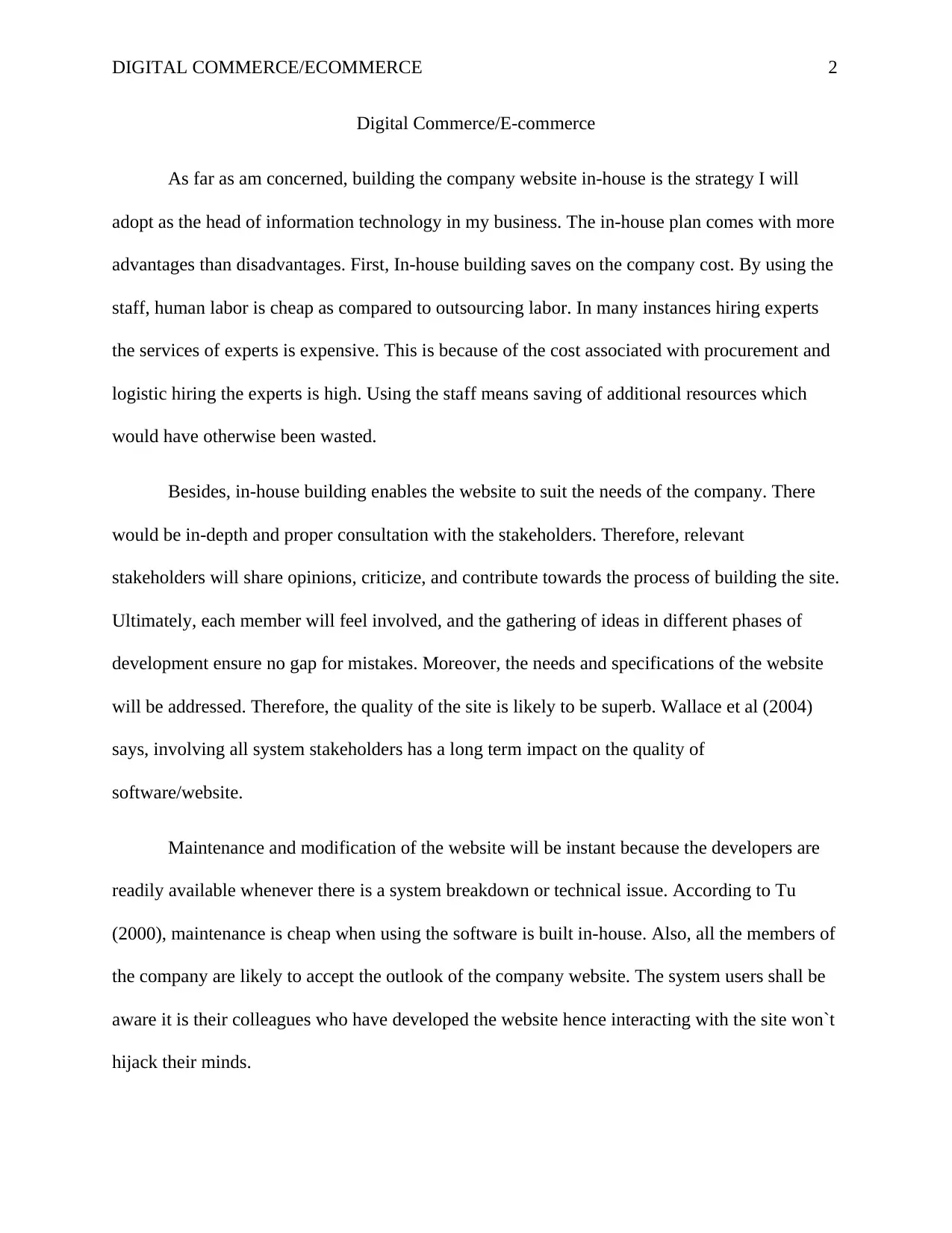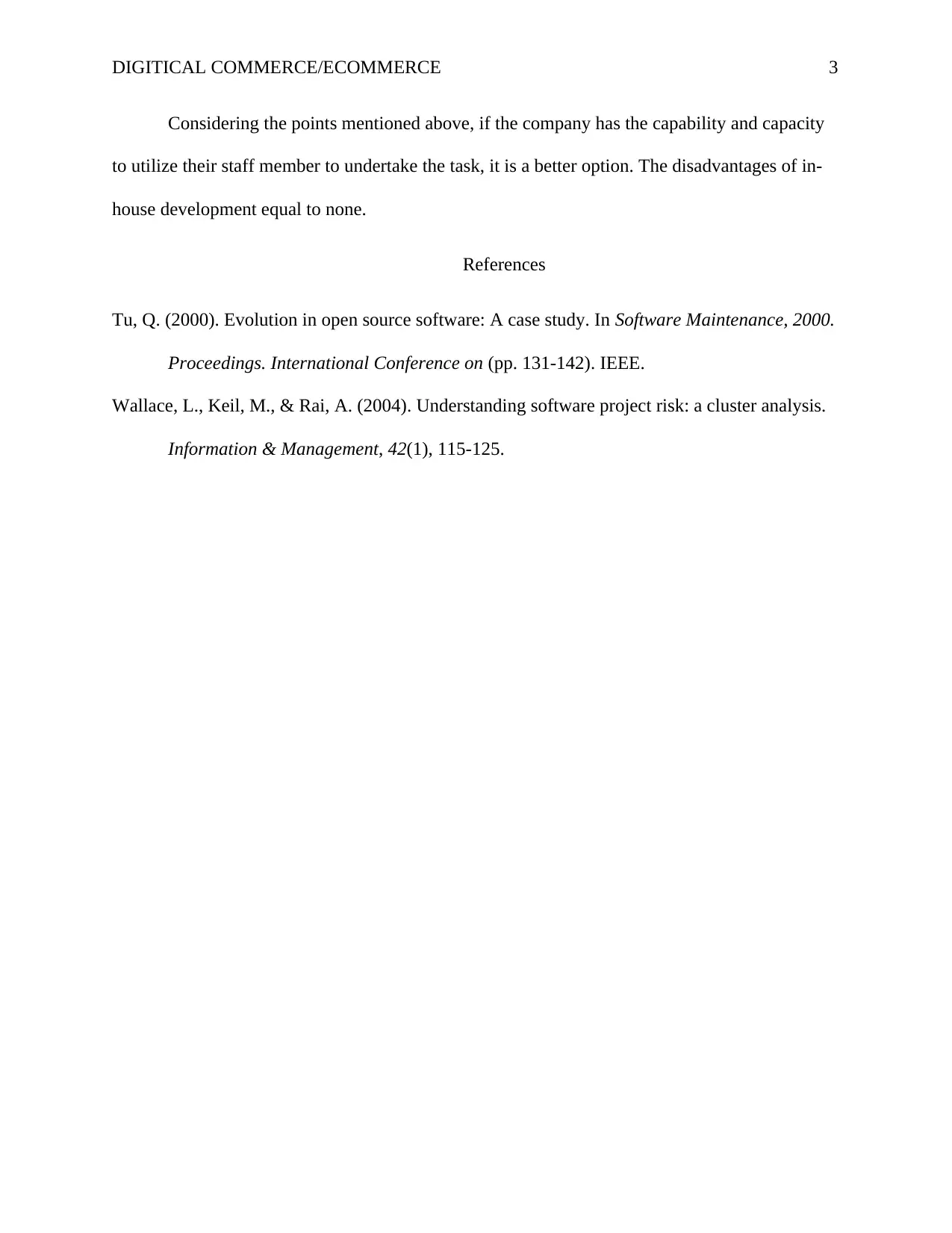Digital Commerce/E-commerce Report: In-House Website Building
VerifiedAdded on 2019/10/30
|3
|446
|255
Report
AI Summary
This report examines the advantages of in-house website building in the context of digital commerce. The author argues that utilizing internal staff for website development is more cost-effective than outsourcing, highlighting savings on labor costs and the ability to tailor the website to specific company needs. The report emphasizes the importance of stakeholder involvement in the development process to ensure quality and address specific requirements. Furthermore, it underscores the ease of maintenance and modification, as well as the increased acceptance of the website by company employees. The report references relevant academic sources to support its claims. The report concludes that in-house development is the superior option if the company possesses the necessary internal capabilities.
1 out of 3





![[object Object]](/_next/static/media/star-bottom.7253800d.svg)